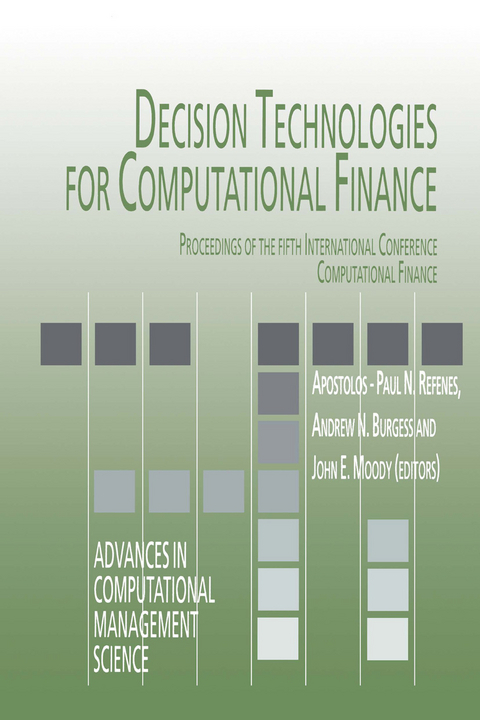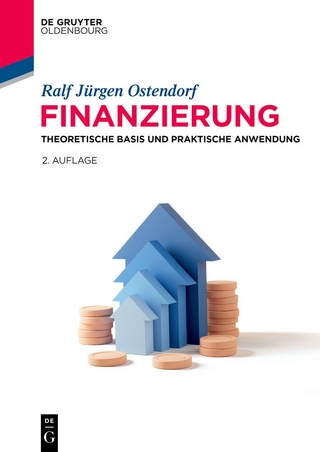
Decision Technologies for Computational Finance
Springer (Verlag)
978-0-7923-8308-6 (ISBN)
1: Market Dynamics and Risk.- Pitfalls and Opportunities in the Use of Extreme Value Theory in Risk Management.- Stability Analysis and Forecasting Implications.- Time-Varying Risk Premia.- A Data Matrix to Investigate Independence, Over Reaction and/or Shock Persistence in Financial Data.- Forecasting High Frequency Exchange Rates Using Cross-Bicorrelations.- Stochastic Lotka-Volterra Systems of Competing Auto-Catalytic Agents Lead Generically to Truncated Pareto Power Wealth Distribution, Truncated Levy-Stable Intermittent Market Returns, Clustered Volatility, Booms and Crashes.- 2: Trading and Arbitrage Strategies.- Controlling Nonstationarity in Statistical Arbitrage Using a Portfolio of Cointegration Models.- Nonparametric Tests for Nonlinear Cointegration.- Comments on “A Nonparametric Test for Nonlinear Cointegration”.- Reinforcement Learning for Trading Systems and Portfolios: Immediate vs Future Rewards.- An Evolutionary Bootstrap Method for Selecting Dynamic Trading Strategies.- Discussion of “An Evolutionary Bootstrap Method for Selecting Dynamic Trading Strategies”.- Multi-Task Learning in a Neural Vector Error Correction Approach for Exchange Rate Forecasting.- Selecting Relative-Value Stocks with Nonlinear Cointegration.- 3: Volatility Modeling and Option Pricing.- Option Pricing with Neural Networks and a Homogeneity Hint.- Bootstrapping Garch(1,1) Models.- Using Illiquid Option Prices to Recover Probability Distributions.- Modeling Financial Time Series Using State Space Models.- Forecasting Properties of Neural Network Generated Volatility Estimates.- Interest Rates Structure Dynamics: A Non-Parametric Approach.- State Space ARCH: Forecasting Volatility with a Stochastic Coefficient Model.- 4: Term Structure and Factor Models.- EmpiricalAnalysis of the Australian and Canadian Money Market Yield Curves: Results Using Panel Data.- Time-Varying Factor Sensitivities in Equity Investment Management.- Discovering Structure in Finance Using Independent Component Analysis.- Fitting No Arbitrage Term Structure Models Using a Regularisation Term.- Quantification of Sector Allocation at the German Stock Market.- 5: Corporate Distress Models.- Predicting Corporate Financial Distress Using Quantitative and Qualitative Data: A Comparison of Standard and Collapsible Neural Networks.- Credit Assessment Using Evolutionary MLP Natwork.- Exploring Corporate Bankruptcy with Two-Level Self-Organizing Map.- The Ex-Ante Classification of Takeover Targets Using Neural Networks.- 6: Advances on Methodology-Short Notes.- Forecasting Non-Stationary Financial Data with OIIR-Filters and Composed Threshold Models.- Portfolio Optimisation with Cap Weight Restrictions.- Are Neural Network and Econometric Forecasts Good for Trading? Stochastic Variance Models as a Filter Rule.- Incorporating Prior Knowledge about Financial Markets through Neural Multitask Learning.- Predicting Time-Series with a Committee of Independent Experts Based on Fuzzy Rules.- Multiscale Analysis of Time Series Based on A Neuro-Fuzzy-Chaos Methodology Applied to Financial Data.- On the Market Timing Ability of Neural Networks: An Empirical Study Testing the Forecasting Performance.- Currency Forecasting Using Recurrent RBF Networks Optimized by Genetic Algorithms.- Exchange Rate Trading Using a Fast Retraining Procedure for Generalised RBF Networks.
| Reihe/Serie | Advances in Computational Management Science ; 2 |
|---|---|
| Zusatzinfo | XI, 479 p. |
| Verlagsort | Dordrecht |
| Sprache | englisch |
| Maße | 155 x 235 mm |
| Themenwelt | Wirtschaft ► Betriebswirtschaft / Management ► Finanzierung |
| Wirtschaft ► Volkswirtschaftslehre ► Ökonometrie | |
| ISBN-10 | 0-7923-8308-7 / 0792383087 |
| ISBN-13 | 978-0-7923-8308-6 / 9780792383086 |
| Zustand | Neuware |
| Informationen gemäß Produktsicherheitsverordnung (GPSR) | |
| Haben Sie eine Frage zum Produkt? |
aus dem Bereich


